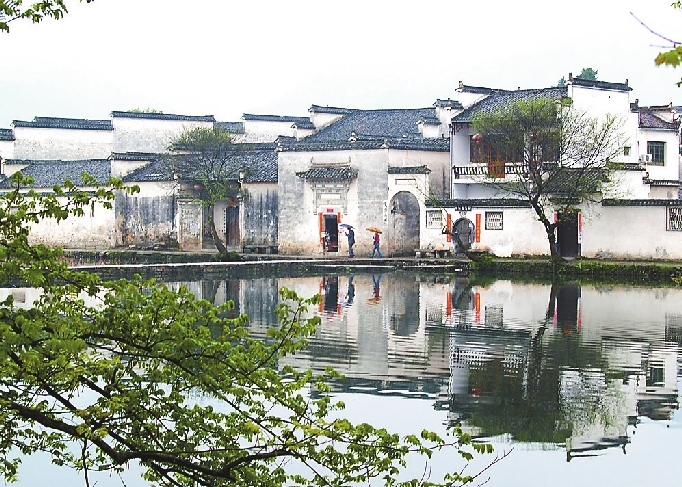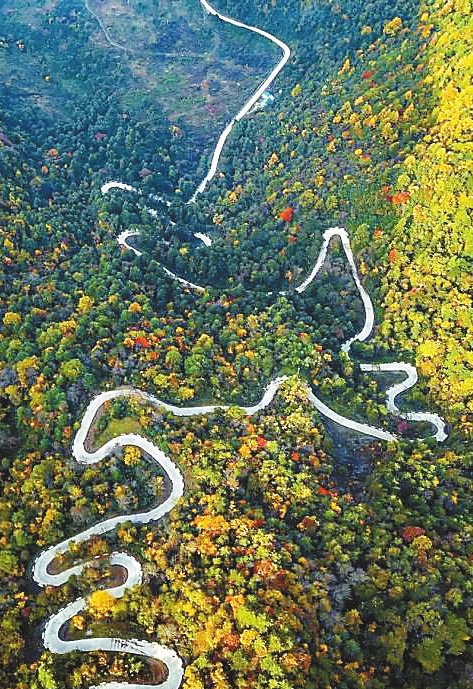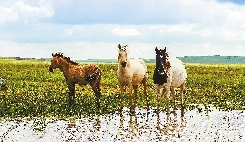




ROADTRIPS are one of the best ways to see the world from the grassroots level. This time we are taking a look at eight provincial highways perfect for taking a long drive, each with its own distinctive and stunning scenery, where you’ll lose yourself in the surroundings, stumble upon the unexpected and possibly blank on where you’re ultimately headed. Inner Mongolia S303 Provincial Highway The S303 Provincial Highway is not very widely heard of, but it’s a legend among experienced long-distance drivers. The stunning sceneries go hand in hand with the bumpy road, making it an object of both love and hate for most drivers who dare to venture across it. Galloping along the S303 Provincial Highway, you will see the unique views offered along the gateway of our country on the border between China and Mongolia. Eventually you will reach a natural treasure called Gongbao Lag Grassland. With clear waters, cute cattle and sheep everywhere, chirping birds and fragrant flowers, simple folk customs, and a pleasant climate, the grassland serves as an ideal place for a summer getaway. Later, you will pass by the Ujumchin (Ujimqin) Prairie, which is a typical temperate steppe located in the northeastern part of Xiliin (Xilin) Gol League in Inner Mongolia. With an area of more than 70,000 square kilometers, it is much larger than the total area of Hainan Province. Within the zone are vast stretches of natural grasslands and landscapes of lakes and volcanic remains, the most typical prairie scenery in Inner Mongolia. The prairie is designated as a national biosphere reserve known for its picturesque grassland ecological system. Keep on driving along the provincial highway, and you will bump into Arxan Mountain, which is no less amazing than that of Switzerland and the heavenly lake on Tuofeng Mountain Range. The highway starts from Baolage Sumu and reaches Lingdian. The route’s length is about 300 kilometers, 80 kilometers of which is without cell phone signal. Best time for driving: From June to November Anhui 218 Provincial Highway The 218 Provincial Highway in Anhui is only 78 kilometers long, but it connects with 99 percent of the beautiful sceneries in the southern part of the province. Only after driving through this with all the tranquil lake views, small bridges, flowing water, ancient villages and countryside houses can you feel what it’s like to step inside a painting. Accommodations for spending the night include the motorhome camp of Huangshan Mountain, which is located in Jiaocun Town right at the West Gate of Huangshan Mountain. The large camp covers an area of around 1,000 mu. Driving on, you will encounter the ancient village of Xidi, which is one of the top 10 most charming villages in China. Xidi Village is home to 224 civil residences that were built in the Ming (1368-1644) and Qing (1644-1911) dynasties. Backed by picturesque hills and towering ancient woods, this village is noted for the harmony of its architecture with the surrounding colorful fields. The residential buildings are mostly black and white. Hongcun Village is another charming ancient village along the provincial highway. Located at the southwestern foot of Huangshan Mountain, the village is most noted for its overall design that resembles the shape of an ox. The architecture and carvings of the approximately 150 residences dating back to the Ming and Qing dynasties are said to be among the best of their kind in China. Then you will enter one of the four fairy lands for autumn views in China, Tachuan Village. The autumn scene at Tachuan Village is one of the most picturesque places imaginable with the leaves of its ancient old trees turning red and yellow. Mukeng Village, hidden among the dense bamboo, is another romantic place that will melt your heart on your roadtrip. It’s the shooting place for the film “Crouching Tiger, Hidden Dragon.” Best time for driving: March to May and September to November Shaanxi S212 Provincial Highway If we say Qinling Mountain is a gift from the nature to Shaanxi, the S212 Provincial Highway is a ribbon wrapping around it that completes the present. Along this route, you can see beautiful sceneries all year long, especially in autumn. People who have driven through it said that you can touch the romantic color once you stretch out your hand. You will get lost in front of the stunning essence of Baoji, the Taibai Mountain. It is the main peak of China’s famous Qinling Mountain and the highest peak in West China with a height of 3,767 meters above sea level. Taibai means “too white” in Chinese. The name derives from the color of the snow-capped mountain peak. The mountain is bestowed with unique natural geographical conditions, and coupled with its towering momentum and the illusive climate variations. Along this route, you will also be amazed by the “dragon’s vein” of China’s history and culture: Qinling, the dividing line of southern and northern China. As the Qinling Mountains divide China into north and south, the temperature, climate and geography on each side are also distinctively different. The rivers to the south of Qinling won’t be frozen in winter, the forests are mainly home to evergreens and broad-leaved trees, and the soil is mostly acidic. The temperature in northern Qinling is below zero degree Celsius in January when the river is frozen, and the forests are dominated by deciduous broad-leaved trees and soil that is rich in calcium. (Chen Xiaochun) | 
